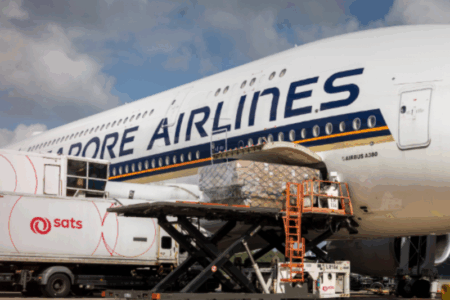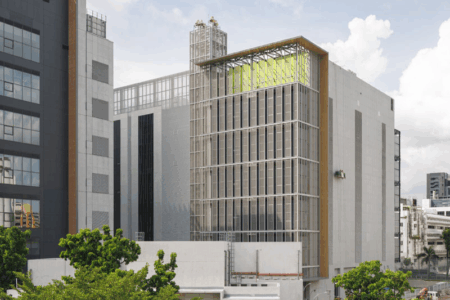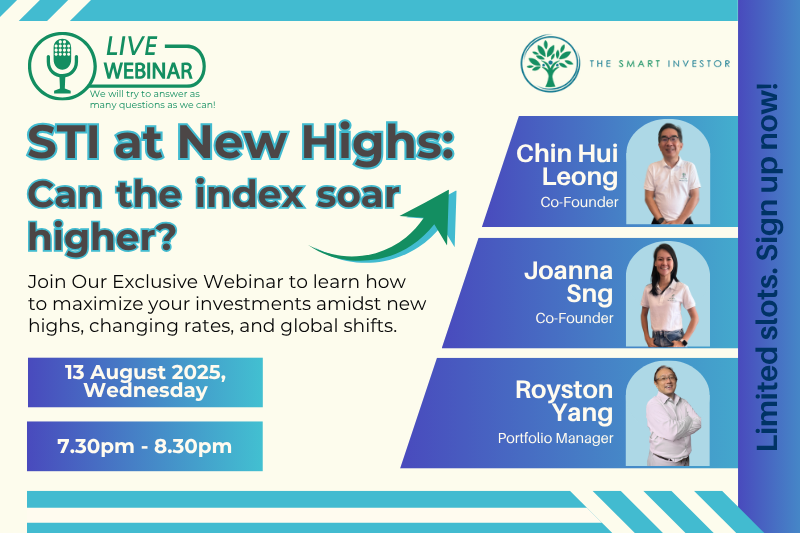In the last few years, office real estate investment trusts (REITs) have been hit by a perfect storm of rising interest rates, slower leasing demand, and the shift to work-from-home arrangements.
These headwinds have resulted in investors shunning this particular REIT sector.
With interest rates finally easing, alongside stabilising macroeconomic conditions, are office REITs poised for a comeback, or are they still value traps in disguise?
The State of the Office REIT Sector
Singapore office REITs include familiar names such as CapitaLand Integrated Commercial Trust (SGX: C38U), Keppel REIT (SGX: K71U), Suntec REIT (SGX: T82U), OUE REIT (SGX: TS0U), and Mapletree Pan Asia Commercial Trust (SGX: N2IU) or MPACT.
In their latest half-year update, these REITs shared that most of their Singapore offices had an occupancy rate of between 94.5% and 99.0%.
These REITs saw positive rental reversions for 1H2025, ranging from 4.8% to more than 10%.
However, this does not mean all Singapore office REITs are the same; offices in prime Central Business District (CBD) locations have seen steady rental growth and demand, while offices in secondary (non-CBD) locations face challenges.
This weakness is seen in MPACT’s Mapletree Business Centre (non-CBD), which recorded a negative rental reversion of 2.7% and a lower-than-average occupancy rate of 92.8%.
Meanwhile, other REITs that focus on overseas office properties reported much lower occupancy rates.
For 1H2025, Manulife US REIT (SGX: BTOU) disclosed a weak occupancy rate of 68.4% while Keppel Pacific Oak US REIT’s (SGX: CMOU)
came in at 88.2%, and Prime US REIT (SGX: OXMU) was 80.2%.
This disparity highlights a growing gap between top-tier and secondary properties, as well as between Singapore offices and global offices.
Why 2025 Could Offer Opportunities
As we embark on a rate-easing cycle, falling interest rates will allow these REITs to refinance their debts at lower interest rates, improve their distributable incomes, and also lead to improved property valuations.
CBRE recently highlighted that the Asia-Pacific’s demand for premium, green-certified offices is expected to continue in the foreseeable future.
Cushman and Wakefield also highlighted an increase in tenants’ flight-to-quality in Singapore, supporting a strong 94.8% occupancy rate for Grade A, CBD buildings.
The average cost of debt for Singapore office REITs remains manageable, ranging from around 3% to as high as 5.5%.
With at least 63% or more of these REITs’ total borrowings fixed-rate, these REITs should benefit from financing at lower rates.
For most Office REITs, their valuation multiples are reasonable, with their current price-to-book (P/B) ratio estimated to be near the historical average of 0.8x to 0.9x for Singapore REITs.
Certain office REITs, such as those that focus on overseas offices, are trading at bargain valuations of approximately 0.3 times.
Why Risks Remain
Some risks that linger include the entrenchment of hybrid work arrangements, which reduces office space demand, leading to negative rental reversion or asset impairment.
For example, Manulife US REIT recently recorded a 10% decline in rental reversion for 1H2025, with its occupancy rate slipping to 68.4%, down from 78.4% a year prior.
Falling rents and increased renovation costs for older or secondary office buildings could also pressure margins, leading to lower distribution to unitholders.
The ability of these REITs to refinance at lower rates is also a factor to consider.
This is especially concerning for REITs with weak operating performances, such as Manulife US REIT with upcoming debt maturities; Manulife US REIT has 75.5% of its total debt due by 2028.
While other office REITs may have shorter average weighted debt to maturities, they make up for it with stable operating performances.
What Investors Should Focus On
Investors should pay close attention to the financial positions and the cost of debt of these office REITs.
Gearing ratios remain sustainable across major office REITs, with Capitaland Integrated Commercial Trust at 37.9%, Keppel REIT at 41.7%, and MPACT at 37.9% as of 30 June 2025.
For comparison, gearing ratios for Suntec REIT and OUE REIT stood at 41.1% and 40.3%.
Overseas-focused office REITs have higher gearing, with Prime US REIT at 46.7%, Manulife US REIT at 57.4%, and Keppel Pacific Oak REIT at 43.7%
The quality of office properties is also vital; environmentally-friendly prime locations with a diversified tenant mix are projected to benefit from tight supply and steady demand.
Rental reversions, which showcase a REIT’s ability to raise rental prices, and the pipeline of lease renewals, which underscore tenant demand, should be monitored assiduously.
In general, management has guided for positive small increments in rental reversions going forward, with leasing trends expected to remain stable (strong for prime locations).
What This Means for Investors
2025 may mark a turning point for office REITs, but the recovery will be uneven as REITs with modern, high-occupancy assets and low refinancing risk will outperform.
As always, not all office REITs will benefit equally.
Strong fundamentals still matter when you’re picking an office REIT for an investment.
Get Smart: Location, Leverage, and Local
Not every cheap office REIT is a bargain.
What matters more is the location of the offices, a strong balance sheet, and a diversified tenant mix.
Only then will the REIT be able to thrive in different market cycles.
When the market is unpredictable, where can you park your money with confidence? Our latest FREE report reveals 5 Singapore dividend-payers built to withstand global storms. Get it now and see what’s still worth holding.
Follow us on Facebook, Instagram and Telegram for the latest investing news and analyses!
Disclosure: Wesley does not own any of the companies mentioned.





